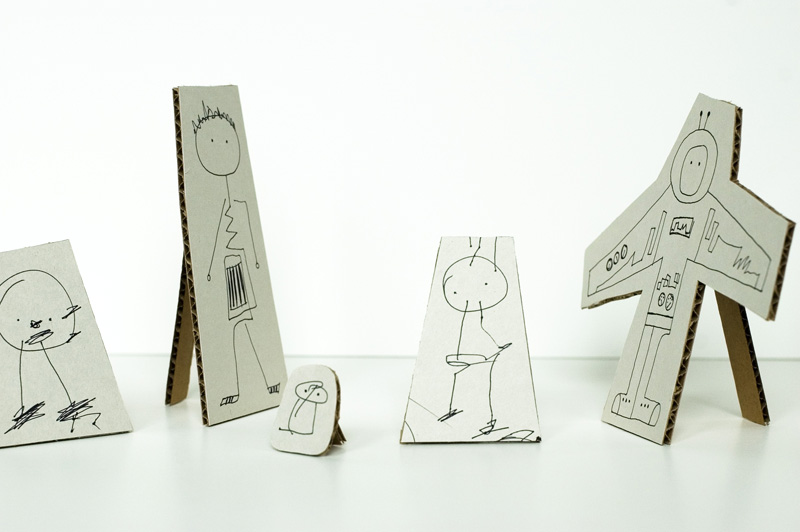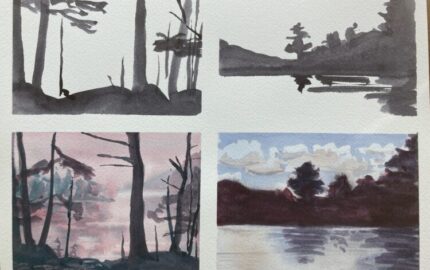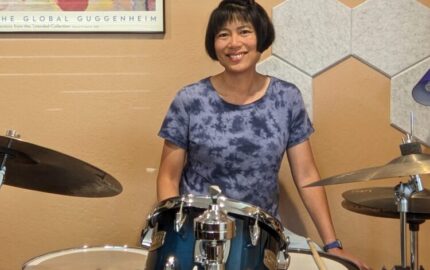Two months into my just-the-facts-ma’am, inverted pyramid life as a novice reporter assigned to cover every commission had that ever been formed anywhere in any municipality on Earth at any time (planning, zoning, parking, library, arts, historic preservation, downtown development, beautification, and so on), I caught a break. I had the chance to write a quasi-feature story about the opening of an exhibit featuring the work of de-institutionalized mental patients (this was California) who were writing poetry and painting as a way of dealing with their issues.
I rejoiced. I didn’t have to sit in a meeting! I didn’t have an overnight deadline! I could look for color! I could write something other than a summary lead!
I spent several days on the story, met many of the women and men included in the show, read their work, saw their paintings, conducted interviews, got good quotes, wrote the piece. A few weeks after the story was published, one of the women I’d interviewed, the one I quoted the most, the organizer of the exhibit, committed suicide.
I was dumbstruck. I had spent more than an hour with her, which for me at that time was a journalistic eternity. She had answered all of my carefully crafted questions. It was, I thought, a great interview. In the story I wrote, featuring the quotes I had selected, she was a survivor. She was going to make it. Not only that, she was helping others make it.
How could I have been so wrong? How could I have been so sure I “got” this woman, the centerpiece of my story? Maybe, I thought to myself, I hadn’t listened well enough when she answered my questions. Maybe I hadn’t asked the right questions. Or maybe it was something bigger than that. Maybe it was the way I had been trained to see and interact with people during my four years in journalism school.
At the Medill J-school at Northwestern University (back in the day, as they say), my reporting teachers had been veteran hard-news daily journalists, battle-scarred and tough. They were demanding, which was good. But they were entrenched in a more narrow, mid-century approach to the craft. I had been taught to think of people as either objects in a story or sources of information for a story. If they were objects, things happened to them (they were robbed; they won the lottery), or they did things (committed a crime, broke a world record). If they were sources of information, you mined them for usable material. Although I was a voracious reader of fiction and understood those people in those stories to be characters with dimension and depth, people motivated by both internal and external forces, folks challenged in visible and hidden ways, that thinking did not spill over into either my conception or training as a news reporter.
And so, during the time I spent with that woman, I saw her not as a character at the center of the story, not as a person to be understood, but rather as a source from which information could be extracted. I am not suggesting here that the story I was assigned back then would have called for or even allowed a deep dive. The point is it never crossed my mind to view her as a character. She was a cardboard cut-out — an interesting cardboard cut-out, but an object without life.
I thought about all this, sobbing in my car so no one in the tiny newsroom would see me. I thought about how, when it came to people and reporting, I was a one-trick pony. The trick was the interview. Yes, I had been taught to scour documents and read reports and go to events, but when it came to people, the lesson from my J-school education was simple: You asked questions.
I had been told by my professors that the interview was “a conversation.” The textbook we were assigned on interviewing started with this premise. But the more I thought about this, the more I realized what they were calling a conversation wasn’t really one at all. I considered the hour I had spent with this young woman. Did we have a conversation, a back-and-forth exchange of ideas and stories? Not at all. We had a planned (by me) orchestrated (by me) encounter that existed outside the real and ongoing life of my interview subject. My interview subject was expected to answer all my questions while I remained comfortably opaque and detached. I came looking for specific information and quotable quotes, as I had been taught to do. I came with questions that I hoped would elicit the answers I needed to flesh out the story I had already half-written in my head.
The interview protocol was clear: You asked. They answered. You scribbled, either in real time or later listening to your recording. If you were lucky, you got a good quote. Maybe, if you were looking for “color” and if your editor didn’t expect the story in 30 minutes, you actually posed these questions in person. And, in between scribbling the answers to the questions, you looked around for descriptive details to insert in the story — if your editor hadn’t warned you that you had only seven inches, barely 300 words. “Cluttered desk,” you wrote down diligently. “Coffee stain on shirt.”
I did all that. But the questions I came with were important to me. Maybe they weren’t the questions that were important to her.
That last revelation, I am embarrassed to admit, came many years later, after I had self-studied and started to write literary journalism, after I had discovered the “shut up and listen” research methods of the cultural anthropologist and discarded the interview approach of a news journalist. What if, back then, I had stepped back and let this young woman direct the “conversation?” What would I have discovered?
I recently came across this extraordinarily instructive interchange between the mighty Joan Didion and a journalistic interviewer who tried to engage her with his own set of questions:
Okay, so how great is that? What a bold lesson. Clearly, Didion cared little about the questions this journalist thought important enough to pose. Suppose every one of our interview subjects was self-confident and snarky enough to answer like this? Think of what we might learn.
What I learned since that the long-ago afternoon I sobbed in my car was that I had engrained lessons to unlearn. I needed to unlearn the J-school notion of the role and place of people in a story. I needed to unlearn how a reporter interacts with people. I needed to unlearn and stop practicing the standard interview.
I needed to become a different kind of journalist than the one I had been taught to be.
I didn’t (un)learn all this right away or all at once. And I didn’t just (un)learn it once. A breakthrough came when I was writing my first serious work of narrative nonfiction, “Stubborn Twig.” The book was a chronicle of three generations of a particular Japanese-American family, the Yasuis. My idea was to make history intimate through the 20th century experiences of this family, to use the Yasuis to chronicle the promises and perils of becoming “American.”
I could not do this if I saw the family merely as sources of information or objects for my questions. They were living, breathing characters who inhabited and animated their own story. That changed everything. Because what I knew came from books and not lived experience, I learned that I was not a writer as much as I was a student. The Yasuis were not sources; they were my teachers. They knew; I didn’t. That dynamic opened their world to me.
During that time, something else happened. Homer and Miyuke Yasui became more than characters in the book I was writing. They became friends. We ate dinner together. We exchanged Christmas gifts. Miyuke taught my oldest son origami. She gave me her secret recipe for “World’s Best Cookies.” (They are.) The line between writer and subject blurred. A barrier came down. My Medill teachers would have been horrified.
I, on the other hand, was thrilled. I felt I had arrived at a way of interacting with people that felt neither superficial nor exploitive. When I granted the Yasuis the power to teach me, lead me, direct me, tell me what was important to them rather than what was important to me, when they befriended me and vice versa, I crossed over into a new way of doing my work. Here people were their own unique selves, actors in their own dramas that, if you stayed and watched long enough, if you were quiet and curious and attentive enough, you might just catch a glimpse of.
These lessons repeated themselves again and again as I continued my work, as I immersed myself in other people’s lives, from middle schoolers to ballerinas to men serving life sentences behind bars. I was (I am) still doing journalism — just not the journalism I was taught.
There are, however, several lessons I learned at Medill that I never, ever want to unlearn:
***
Lauren Kessler’s two most recent books, “Grip of Time: When Prison is Your Life” and “Free: Two Years, Six Lives, and the Long Journey Home,” are deep dives into the worlds of incarceration and reentry. She continues to correspond with and edit the work of the men in the prison writing group she founded in 2016, and is mentoring two of the previously incarcerated men.
I rejoiced. I didn’t have to sit in a meeting! I didn’t have an overnight deadline! I could look for color! I could write something other than a summary lead!
I spent several days on the story, met many of the women and men included in the show, read their work, saw their paintings, conducted interviews, got good quotes, wrote the piece. A few weeks after the story was published, one of the women I’d interviewed, the one I quoted the most, the organizer of the exhibit, committed suicide.
I was dumbstruck. I had spent more than an hour with her, which for me at that time was a journalistic eternity. She had answered all of my carefully crafted questions. It was, I thought, a great interview. In the story I wrote, featuring the quotes I had selected, she was a survivor. She was going to make it. Not only that, she was helping others make it.
How could I have been so wrong? How could I have been so sure I “got” this woman, the centerpiece of my story? Maybe, I thought to myself, I hadn’t listened well enough when she answered my questions. Maybe I hadn’t asked the right questions. Or maybe it was something bigger than that. Maybe it was the way I had been trained to see and interact with people during my four years in journalism school.
The limits of one-way interviews
At the Medill J-school at Northwestern University (back in the day, as they say), my reporting teachers had been veteran hard-news daily journalists, battle-scarred and tough. They were demanding, which was good. But they were entrenched in a more narrow, mid-century approach to the craft. I had been taught to think of people as either objects in a story or sources of information for a story. If they were objects, things happened to them (they were robbed; they won the lottery), or they did things (committed a crime, broke a world record). If they were sources of information, you mined them for usable material. Although I was a voracious reader of fiction and understood those people in those stories to be characters with dimension and depth, people motivated by both internal and external forces, folks challenged in visible and hidden ways, that thinking did not spill over into either my conception or training as a news reporter.
And so, during the time I spent with that woman, I saw her not as a character at the center of the story, not as a person to be understood, but rather as a source from which information could be extracted. I am not suggesting here that the story I was assigned back then would have called for or even allowed a deep dive. The point is it never crossed my mind to view her as a character. She was a cardboard cut-out — an interesting cardboard cut-out, but an object without life.
I thought about all this, sobbing in my car so no one in the tiny newsroom would see me. I thought about how, when it came to people and reporting, I was a one-trick pony. The trick was the interview. Yes, I had been taught to scour documents and read reports and go to events, but when it came to people, the lesson from my J-school education was simple: You asked questions.
I had been told by my professors that the interview was “a conversation.” The textbook we were assigned on interviewing started with this premise. But the more I thought about this, the more I realized what they were calling a conversation wasn’t really one at all. I considered the hour I had spent with this young woman. Did we have a conversation, a back-and-forth exchange of ideas and stories? Not at all. We had a planned (by me) orchestrated (by me) encounter that existed outside the real and ongoing life of my interview subject. My interview subject was expected to answer all my questions while I remained comfortably opaque and detached. I came looking for specific information and quotable quotes, as I had been taught to do. I came with questions that I hoped would elicit the answers I needed to flesh out the story I had already half-written in my head.
The interview protocol was clear: You asked. They answered. You scribbled, either in real time or later listening to your recording. If you were lucky, you got a good quote. Maybe, if you were looking for “color” and if your editor didn’t expect the story in 30 minutes, you actually posed these questions in person. And, in between scribbling the answers to the questions, you looked around for descriptive details to insert in the story — if your editor hadn’t warned you that you had only seven inches, barely 300 words. “Cluttered desk,” you wrote down diligently. “Coffee stain on shirt.”
I did all that. But the questions I came with were important to me. Maybe they weren’t the questions that were important to her.
That last revelation, I am embarrassed to admit, came many years later, after I had self-studied and started to write literary journalism, after I had discovered the “shut up and listen” research methods of the cultural anthropologist and discarded the interview approach of a news journalist. What if, back then, I had stepped back and let this young woman direct the “conversation?” What would I have discovered?
Letting the story subject lead
I recently came across this extraordinarily instructive interchange between the mighty Joan Didion and a journalistic interviewer who tried to engage her with his own set of questions:
You wrote two of the defining books on grief, The Year of Magical Thinking and Blue Nights. What would you say to the millions who have lost loved ones in the past year?
I don’t know. I don’t know that there’s anything to say.
What do you make of the old adage, write what you know?
I don’t make anything of it.
What does it mean to you to be called the voice of your generation?
I don’t have the slightest idea.
Okay, so how great is that? What a bold lesson. Clearly, Didion cared little about the questions this journalist thought important enough to pose. Suppose every one of our interview subjects was self-confident and snarky enough to answer like this? Think of what we might learn.
What I learned since that the long-ago afternoon I sobbed in my car was that I had engrained lessons to unlearn. I needed to unlearn the J-school notion of the role and place of people in a story. I needed to unlearn how a reporter interacts with people. I needed to unlearn and stop practicing the standard interview.
I needed to become a different kind of journalist than the one I had been taught to be.
Unlearning and relearning
I didn’t (un)learn all this right away or all at once. And I didn’t just (un)learn it once. A breakthrough came when I was writing my first serious work of narrative nonfiction, “Stubborn Twig.” The book was a chronicle of three generations of a particular Japanese-American family, the Yasuis. My idea was to make history intimate through the 20th century experiences of this family, to use the Yasuis to chronicle the promises and perils of becoming “American.”
I could not do this if I saw the family merely as sources of information or objects for my questions. They were living, breathing characters who inhabited and animated their own story. That changed everything. Because what I knew came from books and not lived experience, I learned that I was not a writer as much as I was a student. The Yasuis were not sources; they were my teachers. They knew; I didn’t. That dynamic opened their world to me.
During that time, something else happened. Homer and Miyuke Yasui became more than characters in the book I was writing. They became friends. We ate dinner together. We exchanged Christmas gifts. Miyuke taught my oldest son origami. She gave me her secret recipe for “World’s Best Cookies.” (They are.) The line between writer and subject blurred. A barrier came down. My Medill teachers would have been horrified.
I, on the other hand, was thrilled. I felt I had arrived at a way of interacting with people that felt neither superficial nor exploitive. When I granted the Yasuis the power to teach me, lead me, direct me, tell me what was important to them rather than what was important to me, when they befriended me and vice versa, I crossed over into a new way of doing my work. Here people were their own unique selves, actors in their own dramas that, if you stayed and watched long enough, if you were quiet and curious and attentive enough, you might just catch a glimpse of.
These lessons repeated themselves again and again as I continued my work, as I immersed myself in other people’s lives, from middle schoolers to ballerinas to men serving life sentences behind bars. I was (I am) still doing journalism — just not the journalism I was taught.
There are, however, several lessons I learned at Medill that I never, ever want to unlearn:
- Check and double check your facts.
- Be your own toughest editor.
- Meet all deadlines.
- And this mantra from one of my professors: Never promise what you can’t deliver, and always deliver more than you promise.
***
Lauren Kessler’s two most recent books, “Grip of Time: When Prison is Your Life” and “Free: Two Years, Six Lives, and the Long Journey Home,” are deep dives into the worlds of incarceration and reentry. She continues to correspond with and edit the work of the men in the prison writing group she founded in 2016, and is mentoring two of the previously incarcerated men.



